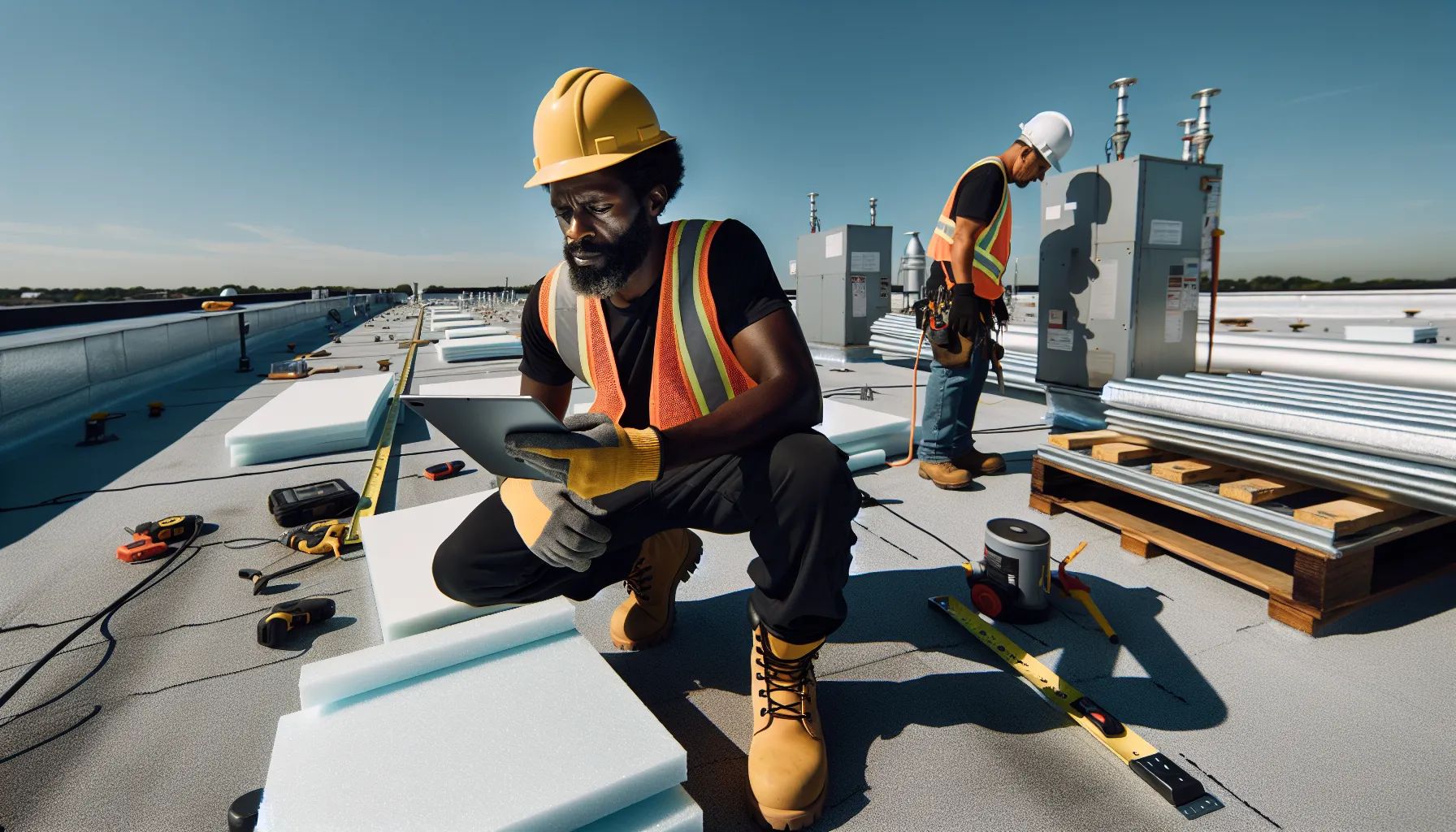Loans for Flipping Houses: A Complete Guide to Real Estate Investor Financing

You've found the perfect fixer-upper property. You've calculated your potential profit. And then reality hits, you need capital to close the deal and cover renovations.
We've seen countless promising house flipping opportunities slip away because investors couldn't secure financing quickly enough. After helping real estate investors access capital for over 100,000 projects totaling $27+ billion, we understand exactly what it takes to get funded fast.
This guide breaks down every financing option available for flipping houses, from hard money loans to bridge financing to DSCR rental loans. You'll learn which loan types match your experience level, how to qualify for the best rates, and exactly what lenders look for in fix-and-flip projects. We'll also show you how technology-powered platforms are making the financing process faster and more reliable than ever before.
Let's get started.

House flipping is the practice of buying a property, renovating it, and selling it quickly for profit. The strategy depends on finding undervalued properties, improving them efficiently, and timing the market correctly.
Most investors don't use cash for these deals. Instead, they leverage specialized financing designed for short-term real estate investments.
Understanding Fix and Flip Loans
Fix-and-flip loans are short-term financing products specifically created for real estate investors. Unlike traditional mortgages that focus on your income and employment history, these loans prioritize the property's value and profit potential.
Lenders evaluate the property's current condition and its after-repair value (ARV), what it should be worth after renovations. This ARV becomes the foundation for determining how much you can borrow.
These loans typically run 6 to 18 months. That's because flippers aim to complete renovations and sell the property quickly, not hold it long-term.
The approval process moves faster than conventional mortgages. We've seen investors close deals in as little as 7 to 10 days with the right lender and documentation.
Fix-and-flip financing often covers both the purchase price and renovation costs. Some lenders release renovation funds in draws as work progresses, protecting both parties throughout the project.
How Much Does It Cost to Flip a House?
The total investment for flipping a house includes multiple components beyond just the purchase price.
Purchase costs vary dramatically by market. In St. Petersburg, Florida and surrounding areas, entry-level flip candidates might start around $150,000, while more substantial projects could run $400,000 or more.
Renovation expenses depend entirely on the property's condition and your target buyer. Light cosmetic updates (paint, flooring, fixtures) may cost $15,000 to $30,000. Full renovations including kitchen and bathroom remodels, new roofing, and structural repairs can easily exceed $75,000.
Speaking of roofing, in Florida's climate, roof condition is critical. Properties with damaged or aging roofs will need replacement before sale. A complete roof replacement for a typical residential property runs $8,000 to $18,000 depending on size and materials. This isn't optional in markets where hurricanes and severe weather are concerns.
Financing costs include origination fees (typically 1-3% of the loan amount), interest payments during the holding period, and potential prepayment penalties.
Holding costs accumulate monthly: property taxes, insurance, utilities, and loan interest. A property held for six months might incur $3,000 to $6,000 in holding costs.
Selling costs include real estate agent commissions (usually 5-6% of sale price), closing costs, and any concessions to buyers.
A realistic budget for a mid-range flip might look like this: $200,000 purchase + $40,000 renovations + $15,000 financing and holding costs + $15,000 selling costs = $270,000 total investment. If the property sells for $320,000, that's a $50,000 gross profit before taxes.
Types of Loans for Flipping Houses

The financing landscape for house flipping offers multiple options, each with distinct advantages depending on your situation and experience level.
Hard Money Loans
Hard money loans are the most popular choice for fix-and-flip investors. These asset-based loans focus primarily on the property's value and potential rather than your credit score or income.
Private lenders or lending companies fund these deals, often approving them within days. Interest rates typically range from 8% to 15%, significantly higher than conventional mortgages.
The application process is streamlined. You won't need extensive income documentation or perfect credit. Instead, lenders want to see a solid deal with clear profit potential.
Loan terms usually run 6 to 18 months, perfect for the flip timeline. Many hard money lenders offer interest-only payments during the loan period, with the full principal due at sale.
These loans work best when you've found a property with strong ARV potential and can complete renovations quickly. The higher interest rate becomes worthwhile because of the speed and flexibility.
Bridge Loans
Bridge loans provide temporary financing between the purchase of a new property and the sale of another. They're called "bridge" loans because they bridge the gap during transition periods.
For flippers, bridge loans function similarly to hard money loans but may offer slightly better terms if you have stronger financials. They typically cover 80% of the property's value.
Repayment comes from the sale of the flipped property or refinancing into permanent financing. Terms generally run 6 to 12 months.
Interest rates fall between traditional mortgages and hard money loans, usually 6% to 12%. You may encounter higher origination fees compared to conventional loans.
Home Equity Loans and HELOCs
If you own a primary residence with substantial equity, you can tap that equity to finance investment properties.
A home equity loan provides a lump sum with fixed interest rates and predictable monthly payments. Rates are typically lower than hard money loans, often 6% to 9%, because your home secures the loan.
A home equity line of credit (HELOC) works more like a credit card. You draw funds as needed up to your credit limit and pay interest only on the amount used. This flexibility helps with unexpected renovation costs.
Both options require good credit (usually 680+) and sufficient home equity. You'll also need income documentation proving you can handle the additional payment.
The major advantage? Lower interest rates and longer repayment terms than hard money loans. The drawback? You're risking your primary residence if the flip doesn't go as planned.
Personal Loans
Personal loans offer unsecured financing without collateral requirements. Banks, credit unions, and online lenders provide these based on your creditworthiness.
Loan amounts typically max out at $50,000 to $100,000, suitable for smaller flips or covering renovation costs on properties you're buying with other financing.
Interest rates vary widely based on credit scores, ranging from 6% to 36%. Borrowers with excellent credit (750+) access the best rates.
The approval process is fast, often providing funds within days. You won't need property appraisals or extensive documentation.
Personal loans work best as supplemental financing rather than primary funding for flips. Use them to cover budget overruns or bridge short-term cash flow gaps.
Traditional Mortgage Loans
Conventional mortgages aren't designed for flipping, but some renovation loan products serve real estate investors.
Fannie Mae HomeStyle Renovation loans and FHA 203(k) loans allow you to finance both purchase and renovation costs in one mortgage. These work if you plan to hold the property as a rental after completing renovations.
The application process resembles traditional home buying, expect 30 to 45 days for approval and closing. You'll need solid credit (typically 620+), income verification, and lower debt-to-income ratios.
The application process resembles traditional home buying, expect 30 to 45 days for approval and closing. You'll need solid credit (typically 620+), income verification, and lower debt-to-income ratios.
Interest rates are the lowest of all options, usually 6% to 8% in current markets. But the lengthy approval process and stricter qualification requirements make these less practical for pure flipping strategies.
Private Money Lenders
Private money comes from individuals rather than institutions, friends, family, business associates, or private investors seeking returns.
Terms are negotiable and highly flexible. You may structure deals as straight loans, equity partnerships, or hybrid arrangements.
Private lenders may accept lower interest rates than hard money lenders if they trust your expertise. Conversely, they may demand higher returns if they're taking more risk.
The approval process is as simple as reaching an agreement. There's no formal underwriting, credit checks, or property appraisals unless the private lender requests them.
Private money works exceptionally well once you've completed successful flips and can demonstrate your track record. Your reputation becomes your collateral.
Business Lines of Credit
Business lines of credit provide revolving credit you can draw from repeatedly as you repay. They function like business credit cards but with higher limits and lower interest rates.
Lenders typically offer $50,000 to $500,000 credit lines to established businesses with strong financials. Interest rates range from 7% to 25% depending on creditworthiness.
You only pay interest on funds you're actively using. This makes them perfect for managing multiple projects simultaneously or covering unexpected costs.
Qualifying requires an established business (usually 2+ years), strong business credit, and solid revenue. Personal guarantees are common.
Lines of credit shine for experienced flippers running multiple projects. The flexibility helps manage cash flow across several properties.
Alternative Financing Options
Beyond traditional loan products, several alternative financing methods have emerged for real estate investors.
Kiavi is the nation's largest lender for real estate investors, having funded over $27 billion across 100,000+ projects since 2013. Their technology-powered platform offers a suite of flexible financing options including fix-and-flip bridge loans, single asset DSCR rental loans, rental portfolio loans, and new construction/infill loans.
Kiavi provides financing in 45 states plus DC, with loans that cater to various experience levels and competitive rates and terms. Their streamlined online platform makes the financing process faster and more reliable than traditional lending.
Kiavi's fix-and-flip loans offer high leverage options with reliable capital for confidence in closing. The easy, technology-powered platform speeds up the financing process considerably compared to traditional lenders.
Crowdfunding platforms pool money from multiple investors to finance real estate deals. You pitch your project, and investors fund portions of it in exchange for returns.
Seller financing occurs when the property seller acts as the lender. You negotiate payment terms directly with them, often with lower down payments and more flexible qualification requirements.
These alternatives may offer creative solutions when conventional financing doesn't fit your situation.
DISCLAIMER: As an affiliate of Kiavi, I may earn a commission from qualifying submissions. This content is for informational purposes only; always consult a financial or legal professional before participating in any third party offers.
How to Qualify for House Flipping Loans

Qualification requirements vary significantly depending on the loan type and lender. Here's what you'll need to prepare.
Credit Score and Financial Requirements
Credit score importance depends heavily on your chosen financing route.
Hard money lenders focus primarily on the deal's quality rather than your credit. Many approve loans with credit scores as low as 600 or even with previous bankruptcies. The property's equity and ARV matter more than your credit history.
Bridge loans and traditional mortgages demand stronger credit, typically 660 minimum, with better rates reserved for scores above 700.
HELOCs and home equity loans usually require 680+ credit scores since you're borrowing against your primary residence.
Business lines of credit need strong business credit profiles, often 140+ on business credit scores.
Beyond credit scores, lenders evaluate your debt-to-income ratio, liquid reserves, and down payment capacity. Most fix-and-flip loans require 20% to 30% down payment.
Kiavi's financing platform considers your level of experience alongside financial metrics, offering competitive rates and terms that match where you are in your investing journey.
Experience and Track Record
Your flipping history significantly impacts loan approval and terms.
First-time flippers face more scrutiny and may encounter higher rates or lower loan-to-value ratios. Some hard money lenders specialize in first-timer deals but charge premium rates.
Having a detailed renovation plan, realistic budget, and experienced contractor relationships helps compensate for lack of personal track record.
Experienced flippers with several completed projects access better terms. Lenders know you understand renovation costs, timelines, and exit strategies.
Documenting previous flips with purchase prices, renovation costs, sale prices, and timelines demonstrates competence. Keep these records organized, they become your resume in the lending world.
Some lenders offer graduated rate structures where your first deal has higher rates, but subsequent projects earn better terms as you build history with them.
Property Qualifications
Lenders don't just evaluate you, they scrutinize the property too.
Location matters enormously. Properties in stable or appreciating markets with strong buyer demand get easier approval. Lenders avoid markets with declining values or limited buyer pools.
In the St. Petersburg, Florida area and throughout the Tampa Bay region, property values have shown consistent growth, making it an attractive market for fix-and-flip financing.
Property condition influences loan terms. Properties needing moderate cosmetic updates are easier to finance than those requiring structural repairs.
Strangely enough, properties in terrible condition sometimes finance easier than those in moderate disrepair, the worse the property, the clearer the value-add potential.
After-repair value must justify the investment. Lenders typically require the ARV to exceed your total costs (purchase + renovations + financing) by at least 20% to 30%.
Lenders often require professional appraisals establishing both current value and estimated ARV. They may also inspect the property before releasing renovation funds.
Understanding Loan Terms and Costs

Financing costs extend well beyond the interest rate. Understanding the full cost structure helps you evaluate different loan options accurately.
Interest Rates and Fees
Interest rates for house flipping loans vary considerably based on loan type and risk factors.
Hard money loans typically charge 8% to 15% annual interest. These rates seem high compared to conventional mortgages, but they're calculated differently.
Most hard money loans are interest-only with short terms. If you borrow $200,000 at 10% for 12 months, you'll pay roughly $20,000 in interest if you hold the property the full year. Sell in six months, and you pay half that.
Bridge loans generally range from 6% to 12%, while HELOCs and home equity loans offer 6% to 9% rates.
Beyond interest rates, expect these fees:
Origination fees typically run 1% to 3% of the loan amount. On a $200,000 loan, that's $2,000 to $6,000 due at closing.
Underwriting fees cover the lender's analysis and processing costs, usually $500 to $1,500.
Appraisal fees range from $400 to $800 depending on property size and location.
Inspection fees for renovation draws may cost $150 to $300 per inspection.
Closing costs include title insurance, escrow fees, and recording fees, typically 2% to 5% of the purchase price.
Some lenders charge prepayment penalties if you pay off the loan early, though many fix-and-flip lenders don't penalize early payoff since that's the expected scenario.
Loan-to-Cost and Loan-to-ARV Ratios
These two metrics determine how much you can borrow.
Loan-to-Cost (LTC) ratio compares the loan amount to your total project costs (purchase price plus renovation budget).
If you're buying a property for $150,000 and budgeting $50,000 for renovations, your total cost is $200,000. At a 75% LTC ratio, you could borrow $150,000, requiring you to put down $50,000.
Typical LTC ratios range from 70% to 90% depending on your experience and the property.
Loan-to-ARV (LTV) ratio compares the loan amount to the property's after-repair value.
If that same property will be worth $275,000 after renovations, a 70% LTV would allow a $192,500 loan.
Lenders use whichever ratio is more conservative. In this example, the LTC at 75% ($150,000) is more restrictive than the LTV at 70% ($192,500), so you'd qualify for $150,000.
Understanding these ratios helps you calculate exactly how much capital you need to bring to each deal.
Kiavi provides high leverage options on their fix-and-flip bridge loans, with financing calculated based on your specific project and experience level.
Repayment Terms and Timelines
Most house flipping loans have short terms matching the flip timeline.
Term lengths typically range from 6 to 18 months. Some lenders offer extensions if you need more time, usually for an additional fee.
Payment structures vary:
- Interest-only payments are most common for hard money loans. You pay only interest monthly, with the full principal due at the end.
- No monthly payments with all interest rolled into a balloon payment at the end.
- Amortized payments similar to traditional mortgages, though less common for flip financing.
Balloon payments, where the entire principal comes due at once, require careful planning. You must either sell the property or refinance before the term ends.
How to Get a Loan for Flipping Houses

Securing financing efficiently can make the difference between winning and losing deals. Here's our systematic approach.
Assess Your Project and Financial Needs
Before approaching lenders, thoroughly analyze your deal and financial requirements.
Calculate the total investment needed: purchase price, renovation costs, financing fees, holding costs, and selling expenses. Add a 15% to 20% buffer for unexpected issues, they always arise.
Determine your available capital. How much can you invest from savings, home equity, or other sources? The difference between available capital and total investment is what you need to finance.
Estimate the project timeline realistically. First-time flippers often underestimate renovation time. Add extra months to your contractor's estimate.
Evaluate the property's profit potential. Calculate your expected profit after all costs. If it doesn't exceed 20% of your total investment, the risk may not justify the effort.
For properties in areas prone to severe weather, like coastal Florida, factor in climate-specific risks. Storm damage during your holding period could significantly impact timelines and costs.
Compare Lenders and Loan Options
Not all lenders offer the same terms, and the cheapest rate isn't always the best deal.
Speed matters in competitive markets. A hard money lender who can close in 7 days may be worth paying 2% more in interest than a traditional lender requiring 45 days.
Reliability counts even more. Lenders who back out at the last minute or discover "new requirements" right before closing can cost you the deal.
Kiavi offers reliable capital for confidence in closing, backed by over a decade of experience financing 100,000+ real estate investment projects. Their technology-powered platform makes the financing process faster without sacrificing reliability.
Compare these factors across lenders:
- Interest rates and origination fees
- Approval and closing timelines
- Down payment requirements
- Renovation fund disbursement process
- Experience working with your property type
- Reputation and reviews from other investors
Local market knowledge helps too. Lenders familiar with St. Petersburg and Tampa Bay real estate understand property values, neighborhood dynamics, and regional risks better than national lenders without local presence.
Prepare Your Application and Documentation
Thorough preparation speeds up approval and demonstrates professionalism.
Gather these documents before applying:
- Property information: address, purchase price, property type, current condition photos
- Renovation budget: detailed line-item breakdown of planned improvements and costs
- Contractor estimates: bids from licensed contractors for major work
- After-repair value documentation: comparable sales supporting your ARV estimate
- Personal financial documents: bank statements, credit reports, proof of down payment funds
- Experience documentation: previous flip results, resume highlighting relevant experience
For properties requiring major work like roof replacement, common in Florida's hurricane-prone climate, include specific estimates for those critical repairs. Lenders want to see you've accounted for all necessary improvements.
Presentation matters. Organize documents professionally in a clear folder or online packet. Create a one-page executive summary highlighting the deal's key metrics: purchase price, renovation budget, ARV, expected profit, and timeline.
Kiavi's streamlined online platform simplifies the application process, allowing you to submit documentation and track your loan status digitally. Their technology integration makes financing faster while their dedicated team provides the guidance you need.
The cleaner your application, the faster you'll get approved and the better your negotiating position for favorable terms.
Pros and Cons of House Flipping Loans

Using financing for house flipping creates opportunities but also introduces risks. Understanding both sides helps you make informed decisions.
Advantages of Using Financing
Leverage amplifies returns. If you invest $50,000 of your own money plus $200,000 in financing to flip a property, your $40,000 profit represents an 80% return on your actual investment, far higher than if you'd used all cash.
Financing enables multiple simultaneous projects. Instead of tying up $250,000 in one all-cash flip, you could potentially finance three or four projects with that same capital, multiplying your profit potential.
Speed is crucial in competitive markets. Hard money loans and bridge financing let you compete with cash buyers by closing quickly. We've seen investors win deals specifically because they could close in 10 days using financing rather than waiting 30+ days for conventional mortgages.
Financing preserves cash reserves for unexpected issues. Renovation projects almost always encounter surprises, hidden damage, permit delays, contractor problems. Having cash reserves available provides a crucial safety net.
Loan interest may be tax-deductible as a business expense. Consult your tax advisor, but many flipping costs including interest reduce your taxable profit.
With Kiavi's flexible financing options, you could access capital for multiple property types, fix-and-flip bridge loans for your flips, single asset DSCR rental loans if you decide to hold a property as a rental, or rental portfolio loans as you scale your operation.
Potential Drawbacks and Risks
High interest rates cut into profits. The difference between an 8% rate and a 12% rate on a $200,000 loan held for 9 months equals $6,000, money that comes directly out of your profit.
Time pressure intensifies with loan deadlines looming. The balloon payment due date creates stress that can lead to rushed decisions, accepting lower offers, or poor renovation choices.
Leverage amplifies losses just as it amplifies gains. If your flip loses money, you still owe the full loan amount plus interest. A failed flip financed with $200,000 in loans hurts far more than one where you risked only your own capital.
Default risks your assets. Hard money loans secured by the investment property could result in foreclosure if you can't repay. HELOCs secured by your primary residence put your home at risk.
Financing costs reduce profit margins. Between origination fees, interest, and other charges, financing typically costs 10% to 20% of the loan amount over the life of the project. That's money you wouldn't spend on all-cash deals.
Lender requirements may limit flexibility. Some lenders restrict what renovations you can make, require specific insurance, or mandate certain contractors. These requirements may conflict with your plans.
Market timing becomes critical. If the real estate market shifts during your project, you may struggle to sell at your target price while loan payments and deadlines continue regardless of market conditions.
In markets like St. Petersburg with hurricane risks, weather delays can extend your timeline and increase holding costs substantially.
Strategies for Successful House Flipping with Loans

Success in financed house flipping requires both financial discipline and strategic planning.
The 70% Rule in House Flipping
This is paragraph text. Click it or hit the Manage Text button to change the font, color, size, format, and more. To set up site-wide paragraph and title styles, go to Site Theme.
Here's how it works:
ARV × 70% - Renovation Costs = Maximum Purchase Price
Example: A property should be worth $300,000 after repairs. Renovations will cost $50,000.
$300,000 × 0.70 = $210,000
$210,000 - $50,000 = $160,000 maximum purchase price
This rule builds in profit margin and accounts for financing costs, holding costs, and selling expenses.
The 70% figure isn't arbitrary, it roughly covers:
- 10% for profit
- 8% for selling costs (agent fees, closing costs)
- 6% for financing and holding costs
- 6% cushion for unexpected expenses
In hot markets, you may need to adjust to 65% or even 60% because competition drives purchase prices up. In slower markets, you might find 75% deals.
The rule works best as a quick screening tool. If a deal doesn't meet the 70% rule, it probably doesn't warrant detailed analysis, unless you have specific reasons to expect lower costs or higher ARV.
Building Exit Strategies Into Your Deal
Every financed flip needs multiple exit strategies, plans for different scenarios.
Primary exit: Quick sale is the ideal outcome. You complete renovations on schedule and sell at or above your target price before the loan term ends.
To optimize this exit:
- Price competitively based on current comps, not what you hope to get
- Stage the property professionally
- List slightly below market to generate multiple offers
- Work with agents experienced in your price range and area
Secondary exit: Hold as rental provides an alternative if the market softens or you can't sell quickly. Before starting any flip, run the numbers on potential rental income.
Kiavi offers single asset DSCR rental loans that could help you transition a flip into a rental property if market conditions change. Their financing options provide flexibility as your strategy evolves.
Tertiary exit: Refinance to permanent financing buys you more time if you need it. If your flip is complete but hasn't sold, refinancing from short-term bridge financing into a conventional rental property mortgage eliminates the balloon payment pressure.
Worst-case exit: Sell at a loss sometimes becomes necessary. Determine your absolute break-even point before starting. Know exactly what price would let you repay the loan and recoup your investment, even with zero profit.
Having these planned exit strategies reduces stress and improves decision-making when unexpected challenges arise.
Managing Renovation Budgets and Timelines
Renovation delays and budget overruns kill more flips than anything else.
Detailed scope of work documents every renovation task before you start. Walk through the property with your contractor and create a line-item list of all work.
For Florida properties, pay special attention to:
- Roof condition and remaining lifespan
- Hurricane protection (impact windows, garage door reinforcement)
- Moisture and mold issues from humidity
- HVAC efficiency (buyers expect this in warm climates)
- Flood zone status and insurance requirements
A solid roof is non-negotiable in coastal markets. Budget $8,000 to $18,000 for complete replacement if needed. Trying to sell a property with a questionable roof in Florida significantly limits your buyer pool.
Time buffers protect against inevitable delays. Add 25% to 50% to contractor timeline estimates. If they say 60 days, plan for 75 to 90 days.
Payment structure should align with work completion. Use a draw schedule that releases funds as specific milestones are completed and inspected. Never pay contractors substantially ahead of completed work.
Change order process prevents budget creep. Require written approval before contractors deviate from the original scope. Unexpected discoveries happen, but they shouldn't balloon your budget without your explicit agreement.
Regular inspections keep projects on track. Visit the property every 2-3 days minimum. Problems caught early cost far less to fix than those discovered at the end.
Backup contractors give you options if your primary contractor disappears, which happens more often than you'd expect. Identify alternatives before starting so you can pivot quickly if needed.
Can Inexperienced Flippers Get Financing?
First-time flippers absolutely can get financing, though they face additional challenges.
Many hard money lenders specifically work with new flippers. They compensate for your inexperience by focusing heavily on the deal quality and requiring larger down payments, often 25% to 30% versus 20% for experienced flippers.
Some strategies help first-timers access financing:
Partner with an experienced flipper for your first deal. Their track record may convince lenders to offer better terms. Structure the partnership so you provide capital and do the work while they provide experience and credibility.
Start smaller with a property requiring cosmetic updates rather than major structural work. Lenders view these as lower risk, and you'll learn the process without overwhelming complexity.
Document everything thoroughly. First-timers who present detailed renovation plans, realistic budgets, and contractor agreements demonstrate seriousness that compensates for lack of track record.
Bring more capital. The larger your down payment, the lower the lender's risk and the more willing they are to approve your loan.
Take a real estate investing course specifically about house flipping. Some lenders give more favorable terms to graduates of recognized programs.
Use FHA 203(k) or Fannie Mae HomeStyle loans for your first flip if you're willing to live in the property during renovations. These renovation loans have more forgiving qualification requirements.
Build relationships with local lenders. Community banks and credit unions sometimes offer portfolio loans to local investors, especially if you have other accounts with them.
Kiavi provides financing that caters to various levels of experience, including options for newer real estate investors. Their platform combines technology with industry guidance and support to help investors scale their operations.
Your first flip will likely have higher financing costs than subsequent ones. Consider this part of your education budget, the experience you gain makes future deals easier and more profitable.
After completing one or two successful flips, you'll find financing becomes significantly easier to obtain with much better terms. Building that track record is crucial for long-term success in house flipping.
Conclusion
Securing the right financing can transform your house flipping business from a side hustle into a scalable investment operation. Whether you choose hard money loans for their speed, bridge financing for flexibility, or leverage your home equity for better rates, each option serves specific situations and experience levels.
The key isn't finding the cheapest financing, it's finding the right financing for your specific project and situation. Sometimes paying 2% more in interest makes sense if it means closing 30 days faster and capturing a time-sensitive deal.
We've seen how Kiavi's technology-powered platform makes financing faster and more reliable, offering fix-and-flip bridge loans, rental loans, and portfolio financing across 45 states plus DC. Their suite of flexible financing options could help you access the capital you need for growing your investment property portfolio, whether you're completing your first flip or scaling to multiple simultaneous projects.
Ready to explore financing options for your next flip? Start by running the numbers on your current opportunity. Calculate your total costs, estimated ARV, and profit potential using the 70% rule. Then compare loan products based on your experience level and project timeline.
Don't let traditional lending constraints hold you back. With the right financing partner and a solid deal, you could be closing on your next property in as little as a week. The technology-enhanced solutions available today make real estate investment financing more accessible than ever, but only if you take action.
Research lenders, prepare your documentation, and start building relationships now. The best financing often comes from lenders who know you and your work, which means starting those conversations before you desperately need a loan.
Your next successful flip starts with securing the right capital. Make it happen.
What is the best loan for flipping houses if you're a beginner?
Hard money loans are ideal for beginners because they focus on the property's value and profit potential rather than your credit score or experience. While interest rates range from 8% to 15%, these loans approve quickly and don't require extensive income documentation, making them accessible to first-time flippers.
How much down payment do I need for a house flipping loan?
Most fix-and-flip loans require 20% to 30% down payment of the total project costs. First-time flippers often need to put down 25% to 30%, while experienced investors may qualify with 20% down. The exact amount depends on your track record and the property's profit potential.
What is the 70% rule in house flipping?
The 70% rule states you should never pay more than 70% of the after-repair value (ARV) minus renovation costs. This formula builds in profit margin and covers financing costs, holding expenses, and selling fees, helping investors quickly evaluate whether a property is worth pursuing.
How long does it take to get approved for a fix-and-flip loan?
Hard money lenders can approve and close fix-and-flip loans in as little as 7 to 10 days with proper documentation. Traditional mortgages take 30 to 45 days, while bridge loans typically close within 2 to 3 weeks, depending on the lender and property complexity.
Can I use a loan for flipping houses to cover both purchase and renovation costs?
Yes, most fix-and-flip loans cover both the purchase price and renovation expenses. Lenders typically use loan-to-cost (LTC) ratios of 70% to 90%, releasing renovation funds in draws as work progresses to protect both the investor and lender throughout the project.
What credit score do you need for house flipping loans?
Credit requirements vary by loan type. Hard money lenders often approve loans with credit scores as low as 600, focusing primarily on the deal quality. Bridge loans and home equity products typically require 660 to 680 minimum, while the best rates are reserved for scores above 700.

